„This is the top of the mound. It’s a nice sunny spot.“, says Mike Hammond. It only took us a few minutes to get here. A short trail through a thick forest of mangroves leads from the water to the top of the hill. „This is the highest point in Lee County“, says Mike. „30 feet above water.“ All thanks to the countless shells that the Calusa had piled over many generations to form this man-made hill. „Supposedly the more important you were the higher up on the mound you’d be.“, says Mike. He is the coordinator of the Calusa Blueway and joins me for my first leg. „Back then you’d be able look out and see your enemies approaching. You get a nicer breeze and if there’s a flood you’re up higher.“

Mound Key is the first stop on my 100-mile-long journey following the tracks of the Calusa for a week. Today the small island made out of tons of shells is a state park, roughly one kilometer long, that you can only reach from the water. Mike and I started with our sea kayaks in the morning on the Estero River. After a short stretch on the river we were reaching the Estero Bay, separated from the Gulf of Mexico through a series of narrow barrier islands. It is sunny and windy, making it difficult for us to keep the course.
Initially I struggle a bit with the boat. In the past I have almost solely traveled in canoes, years ago I even built one out of birch bark to then paddle the entire Yukon River from the headlakes to the Bering Sea, more than 3000 kilometers. Now, I am sitting in a kayak, wearing a life vest and spray skirt that covers the entire cockpit. It is supposed to protect from spray water from the paddles and the waves. There are two hatches for loading the gear into the boat and a rudder, that I can flip in the water if necessary to correct the course via pedals.
The landscape is also something that I need to get used to. Beyond the mangroves and small islands houses and hotel complexes line the shore. On the horizon a few wide bridges expand across the water and connect the barrier islands with the mainland. Paddling has always been a way for me to escape into the wild, away from civilization and to places that are otherwise impossible to get to. Here, paddling also becomes an urban adventure.
But on Mound Key I step into a different, almost enchanted world. The island was the ceremonial center of the Calusa when the Spaniards arrived in the 16th century trying to settle in the area. Initially they failed. Because the Calusa were known as fierce people pushing the intruders back. In contrast to other tribes in what now is Florida they did not grow grains or vegetables but lived primarily of fishing. And they gathered mussels, using their shells to wrest land from the sea. Dozens of islands were formed that way over the centuries before the Calusa, like all the other tribes, had to surrender facing the superior numbers of Europeans and finally gave up there territory in the 18th century. Today there are no more descendants but a few of their islands survived and are now preserved and studied by archaeologists.
„The Calusa Indians were here for over 600 years and they built this mound.“, says Alison Giesen in the Mound House that Mike and I are paddling to next. It is located on Estero Island, a narrow stretch of land off the coast. „You were at Mound Key. That was their capital. Their leaders, their noble were living there. And this would be like a small community within the Calusa people. So you were here at a little residential mound.“, Alison continues. Today there is nothing left. A few years ago the city of Fort Myers accquired and restored the almost 100 year old house sitting on the property along the water. They took out the added swimming pool and discovered layers of shells, several feet thick, originally heaped up by the Calusa.
„Many historians and archaeologists often refer to the Calusa as the shell people not just because they built mounds but because they used shells for making jewelry, tools, even weapons.“, says Dexter Norris. The biologist also works for the Mound House, that recenty has been added to the National Register of historic buildings. On a picnic table next to the house Dexter has put a few big shells, a necklace made of small shells and a crude knife. „It’s made out of a shark’s tooth on the end of a stick. Sharks are a great commodity around here and they would have been back then. You get meat, you get the teeth. You also have the skin which could be used as a sandpaper. Shark skin’s very, very rough and if you let it dry you’ve got ancient sandpaper right there.“, he explains. Next to it sits a small carved, wooden sculpture on the table. It depicts a Calusa in a dug-out pushing his boat with a stick. „There had been some very large dug-out canoes uncovered made out of pine or cypress.“, says Dexter. „People would fell the tree off-site and cut off some of the larger branches. And then they would have brought the trunk more or less back to this type of site where the community would have gotten involved in hacking out pieces and even selectively burning out pieces and scraping it and within about two weeks you’d have a canoe ready to go.“
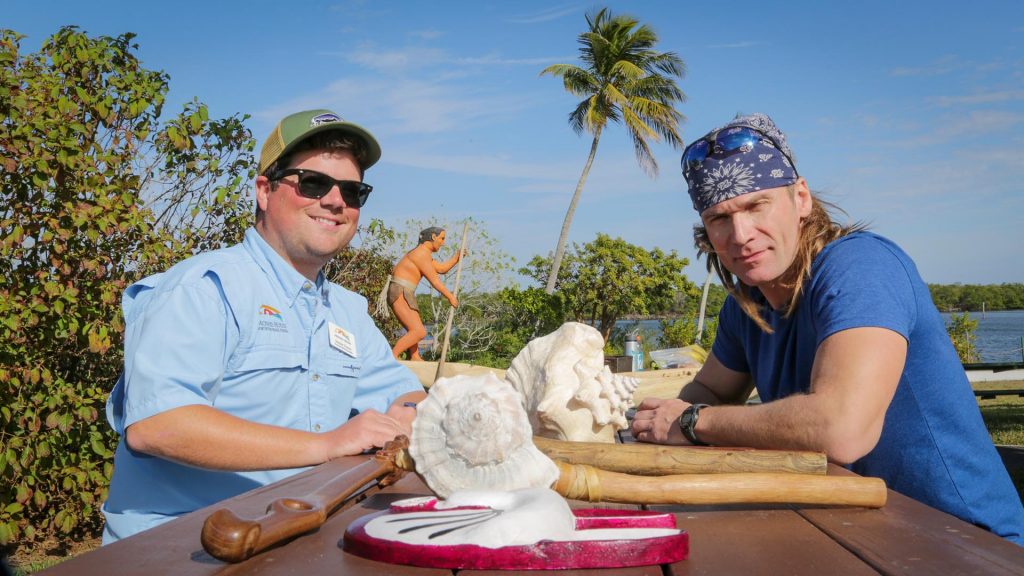
It averaged fifteen feet in length, just like my sleek sea-kayak. In the afternoon I push it back into the water, Mike can’t continue and says goodbye. I close the spray skirt and paddle back into the mangroves. The waterway through the thick maze of trees and bushes narrows. The landscape here seems to be unchanged since the time of the Calusa, except for a few markers in the water showing the way.
Mangrove forests are among the most important and remarkable ecosystems in the world. More than 100 different species exist, protecting the estuaries along the coasts. They prevent erosion and are habitat for countless fish, crabs and birds, which nest in the trees and bushes.

Late in the afternoon I leave the idyll of the mangrove tunnels to paddle back into the open water and across the bay towards Fort Myers Beach. Here, I will spend my first night, in a motel, that you can paddle to. A short dock in one of the canals enables me to land directly in front of my room. The sun sinks in the west over the Gulf of Mexico. In the next days I want to paddle out there as well. But tomorrow I am going to stay in the bay again, a wise decision as I will soon find out.
* * *

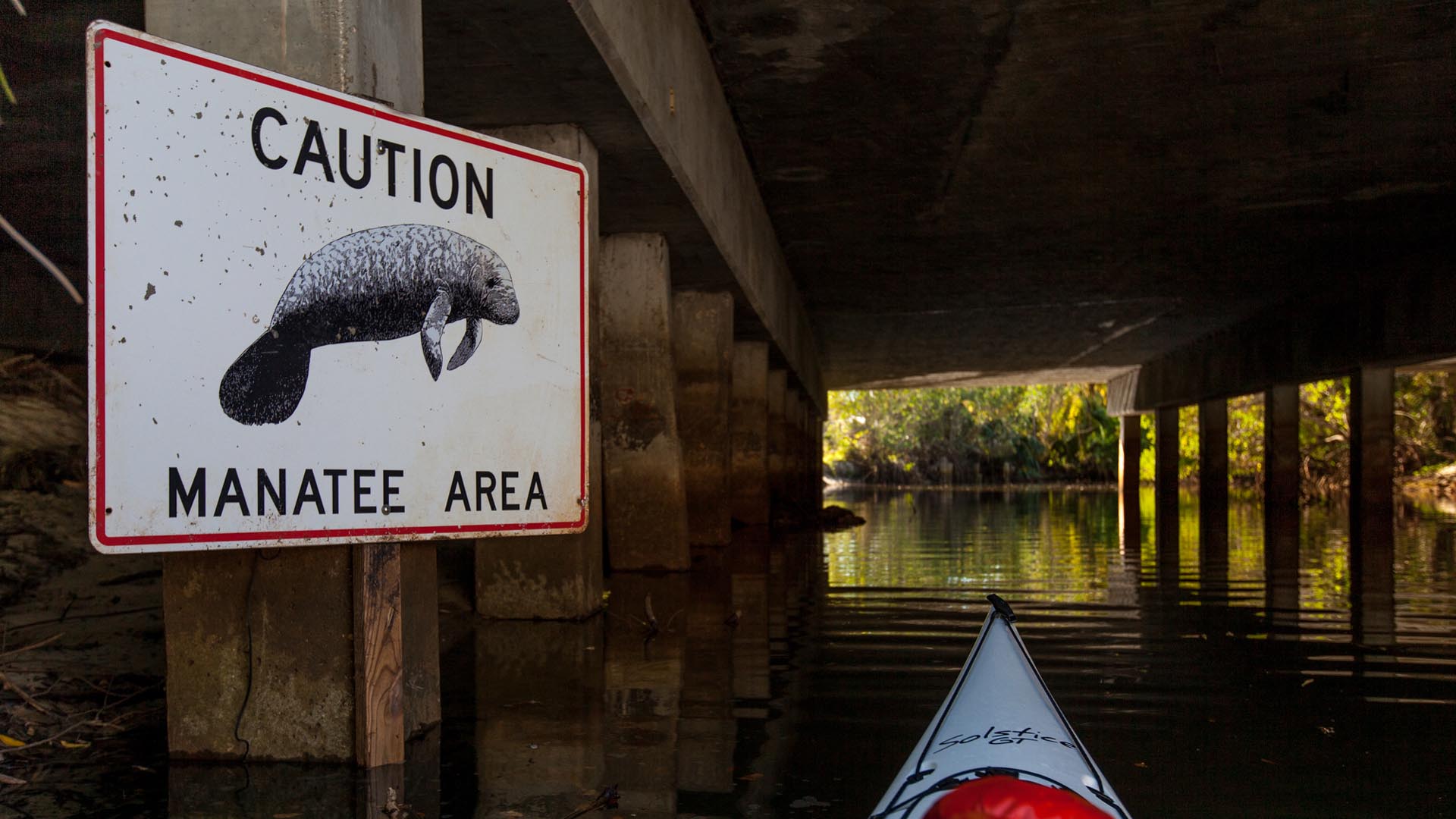
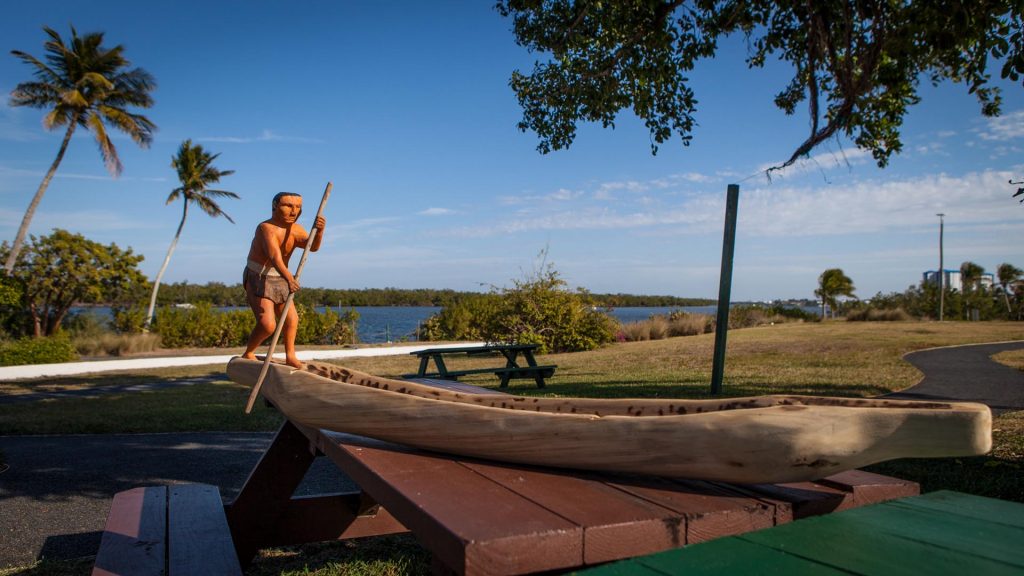
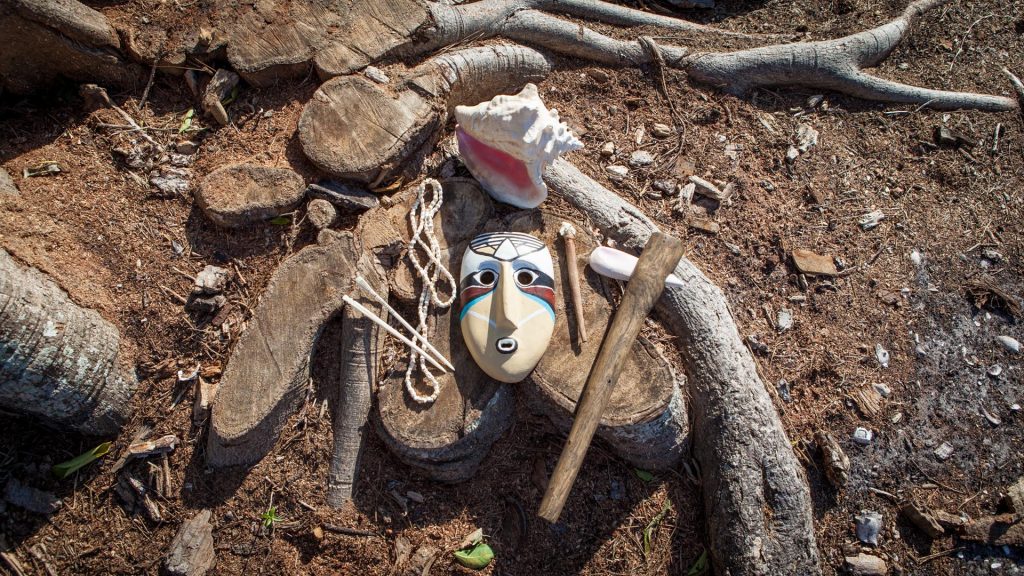
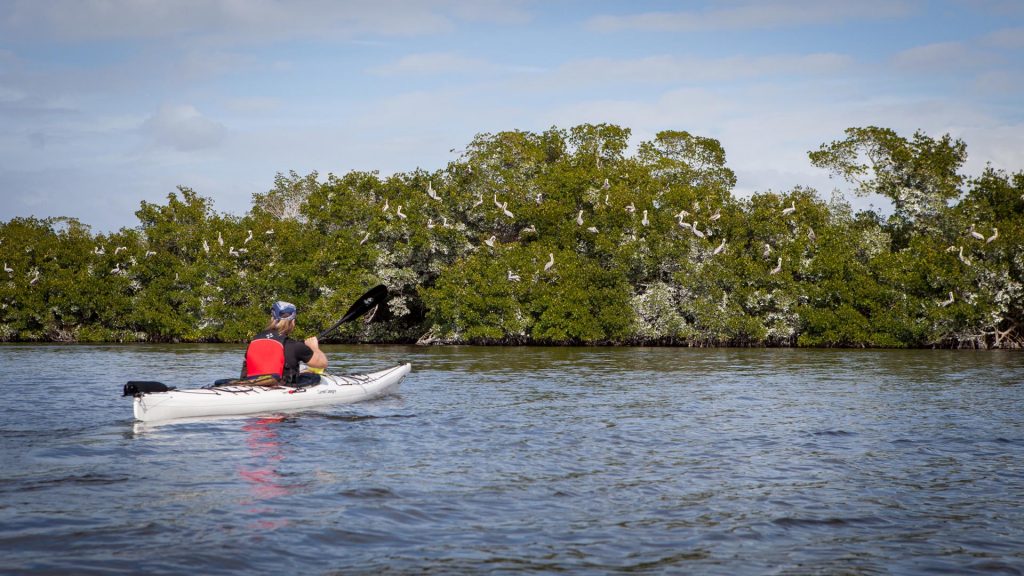

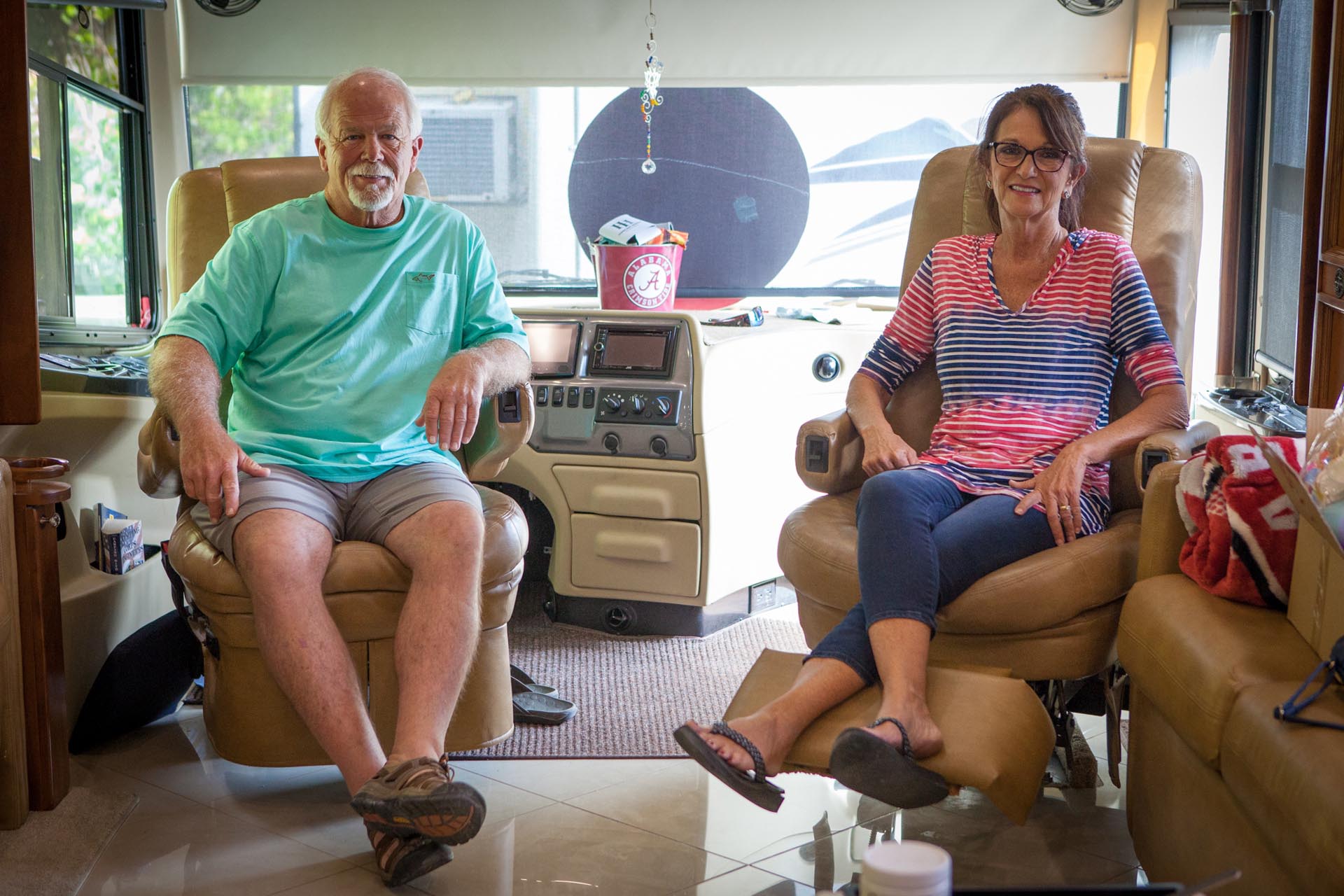
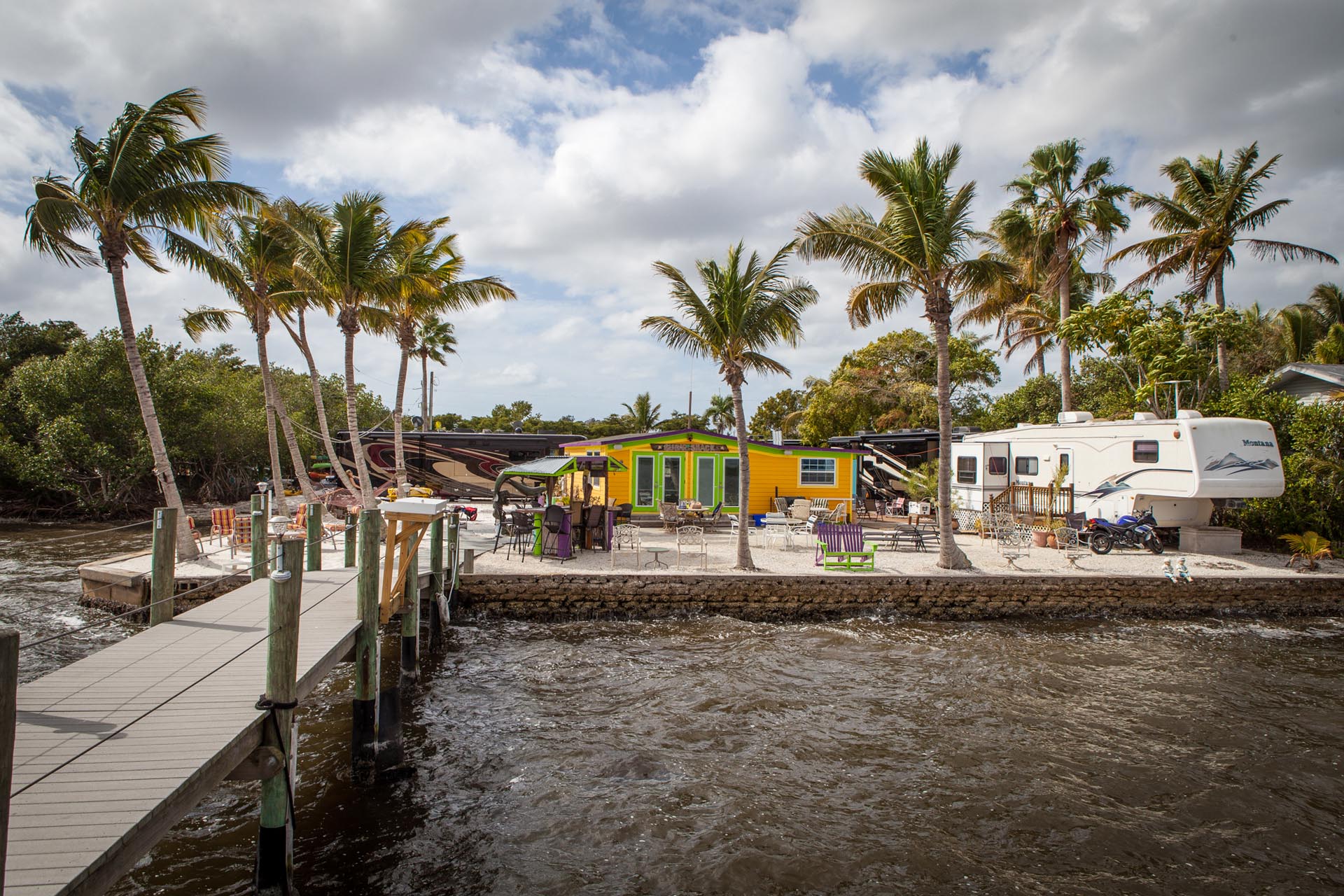
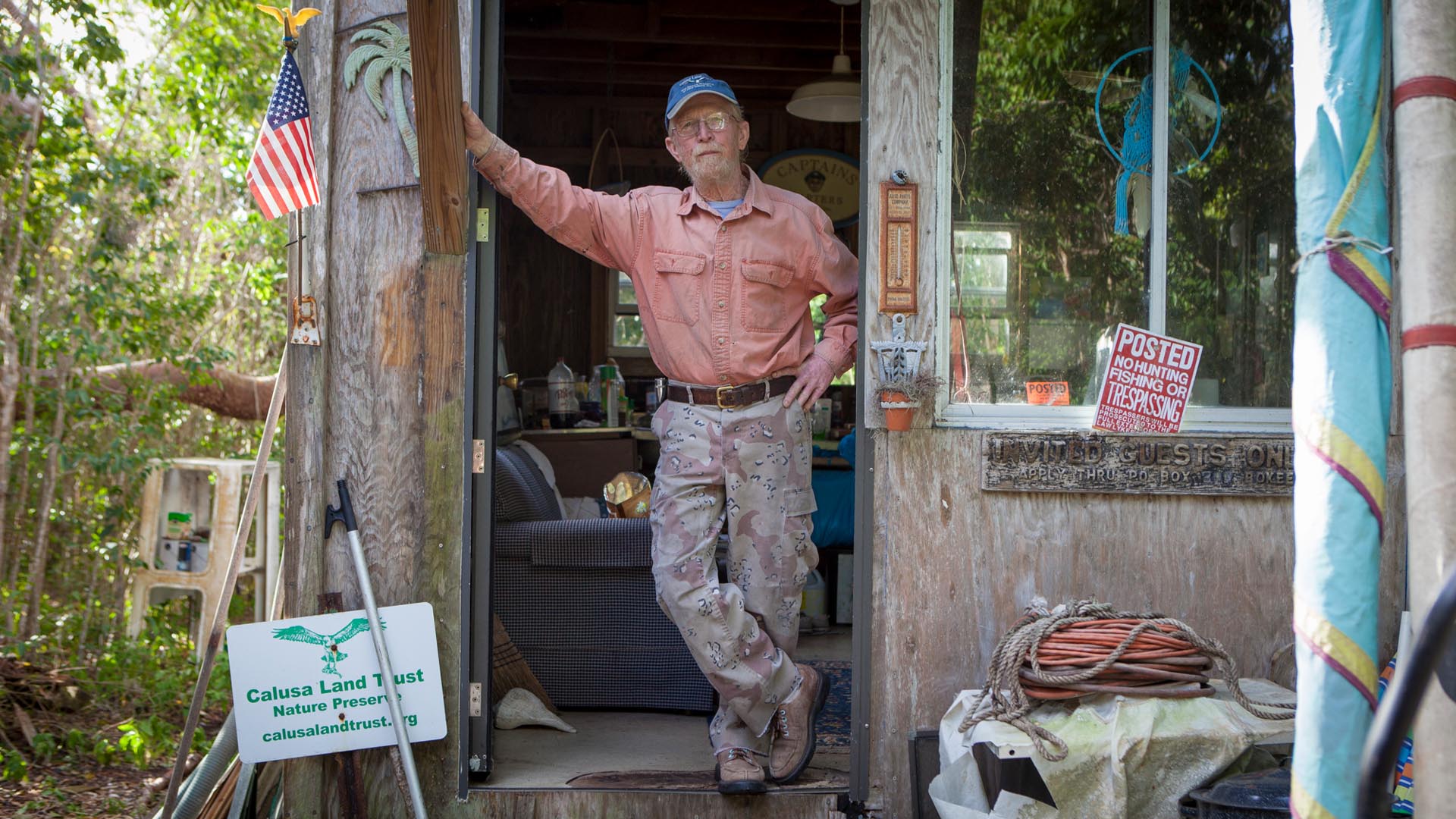
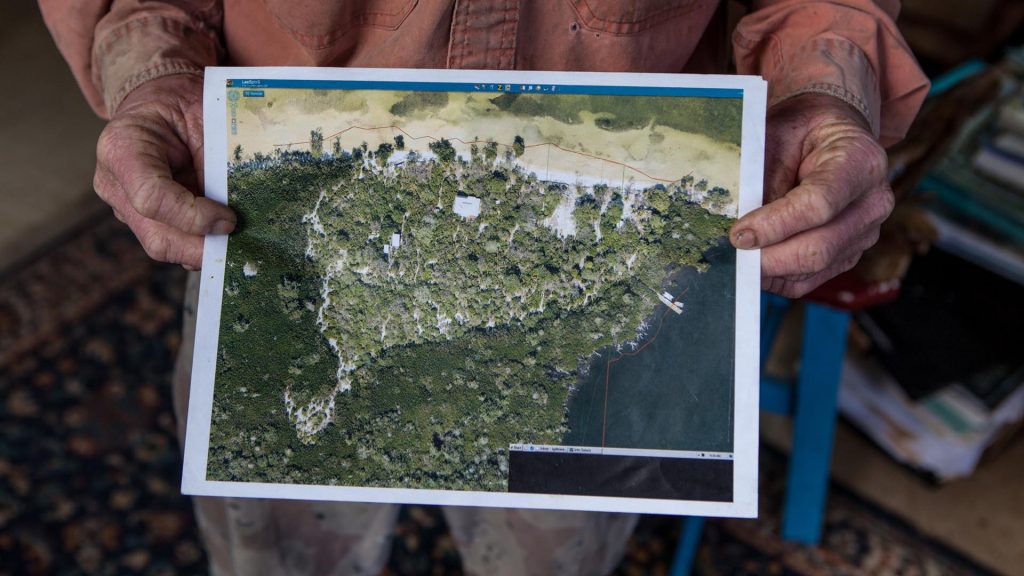
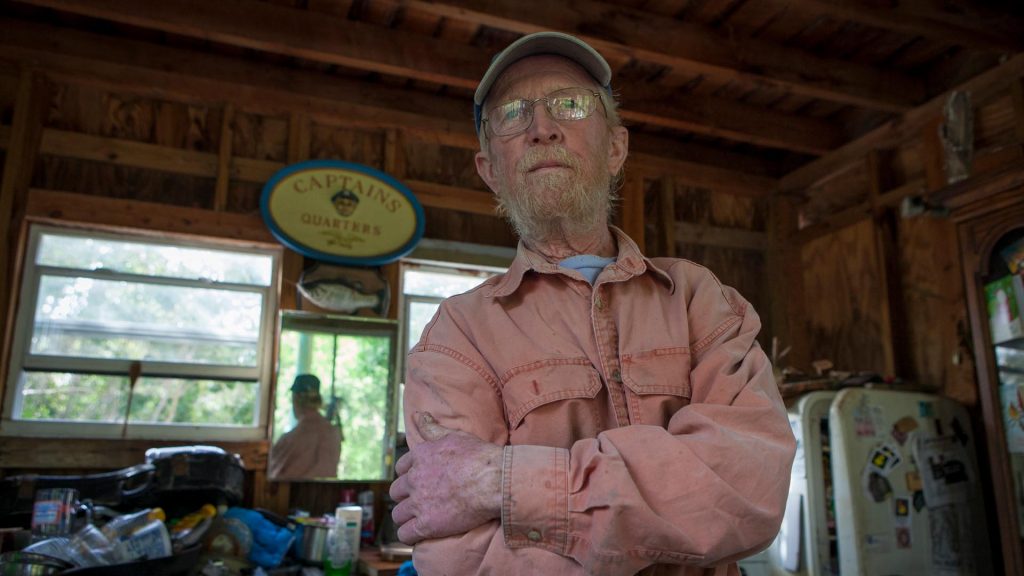
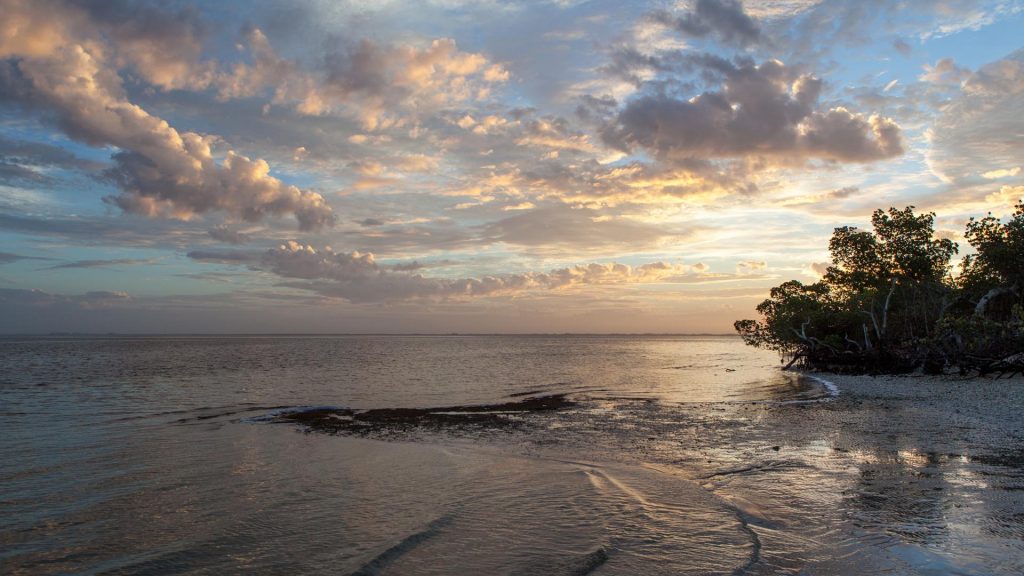
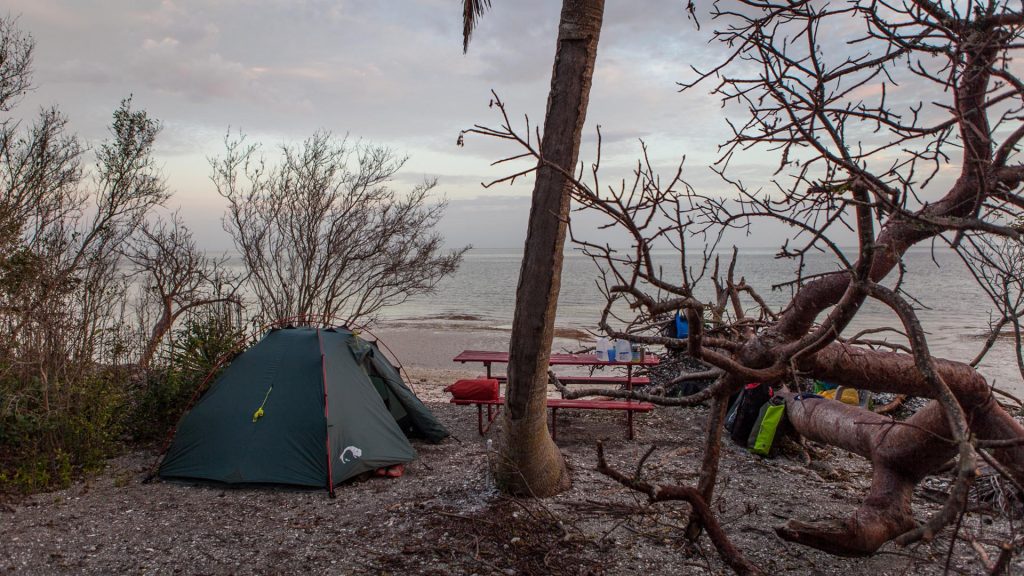
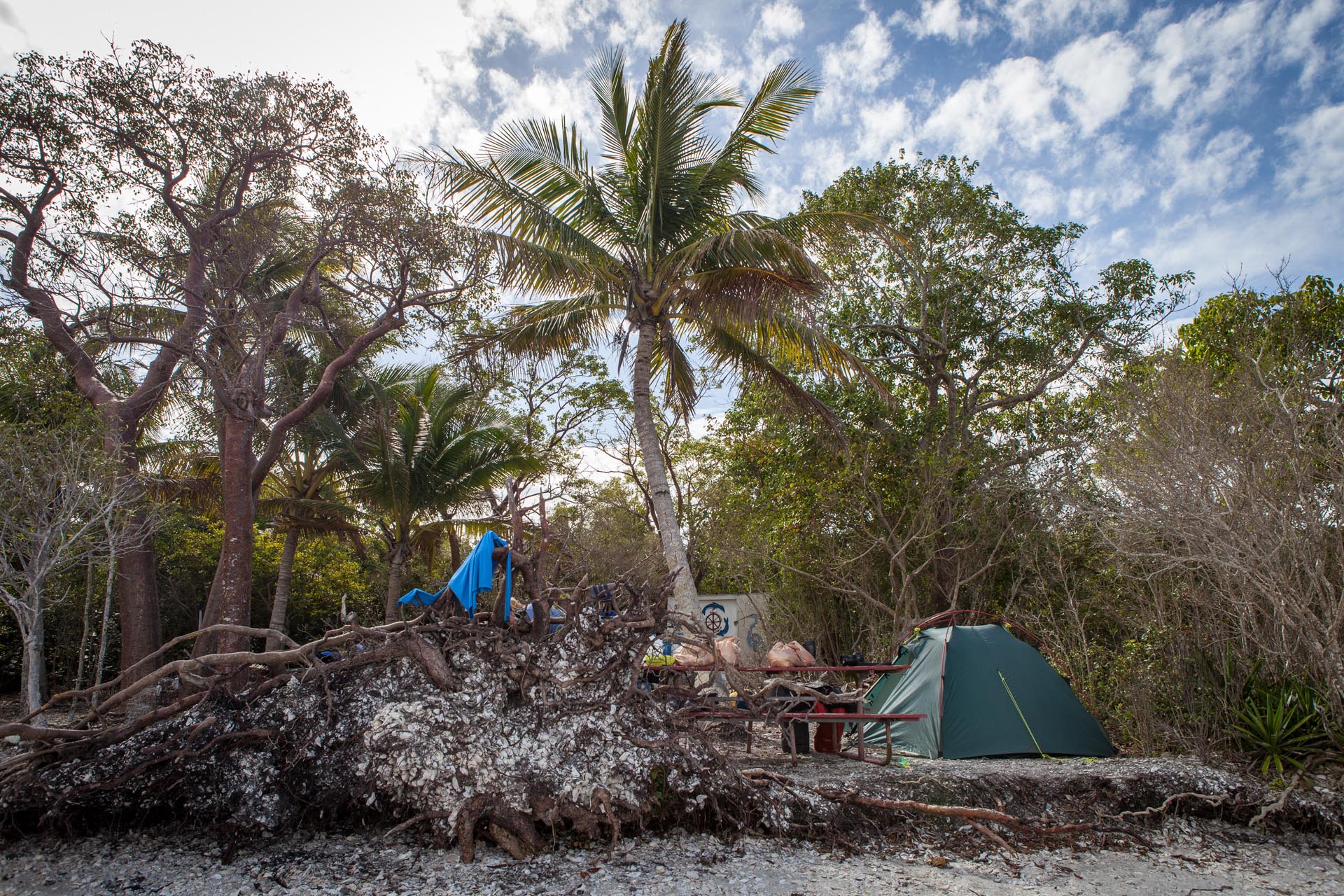
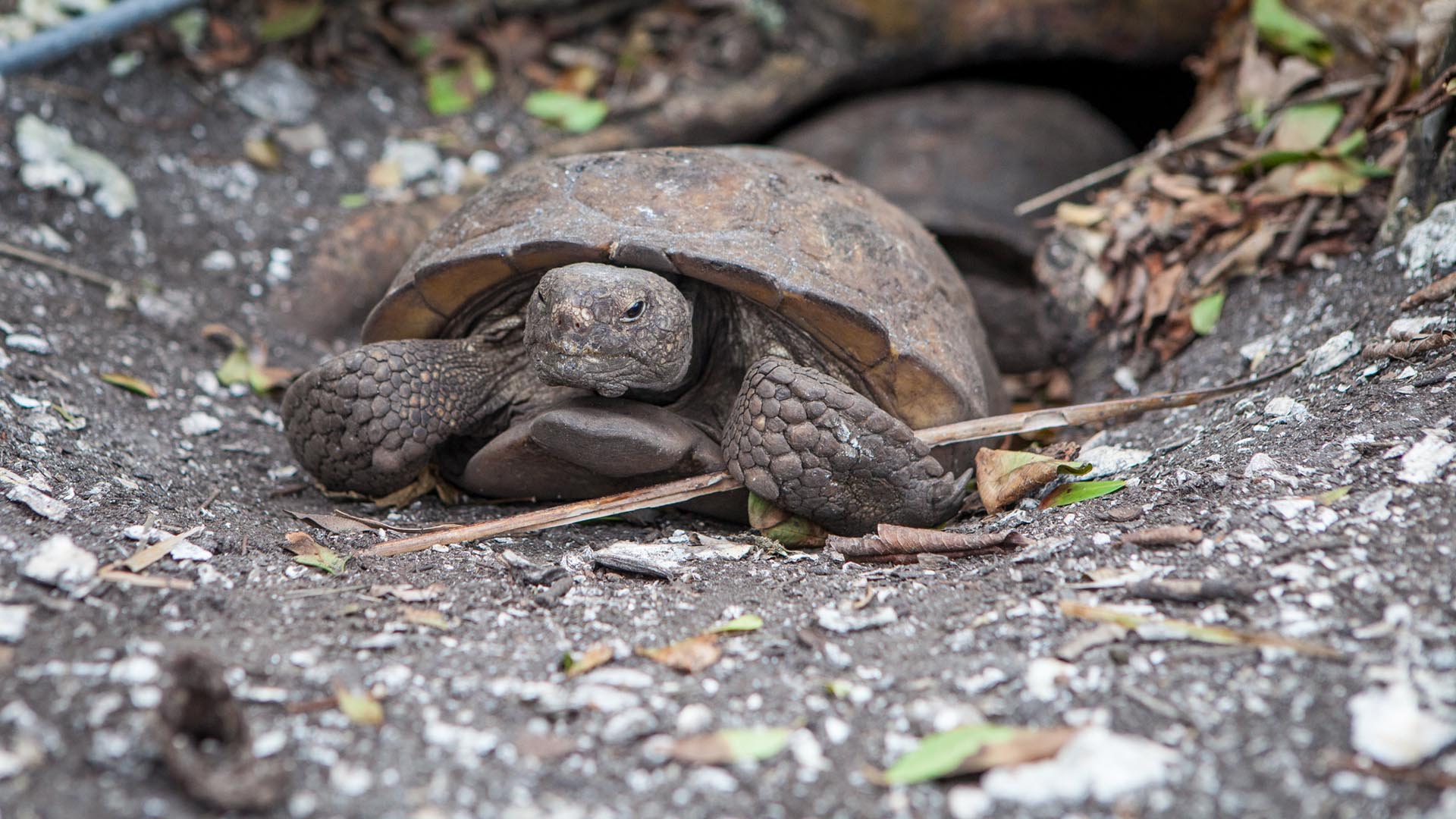
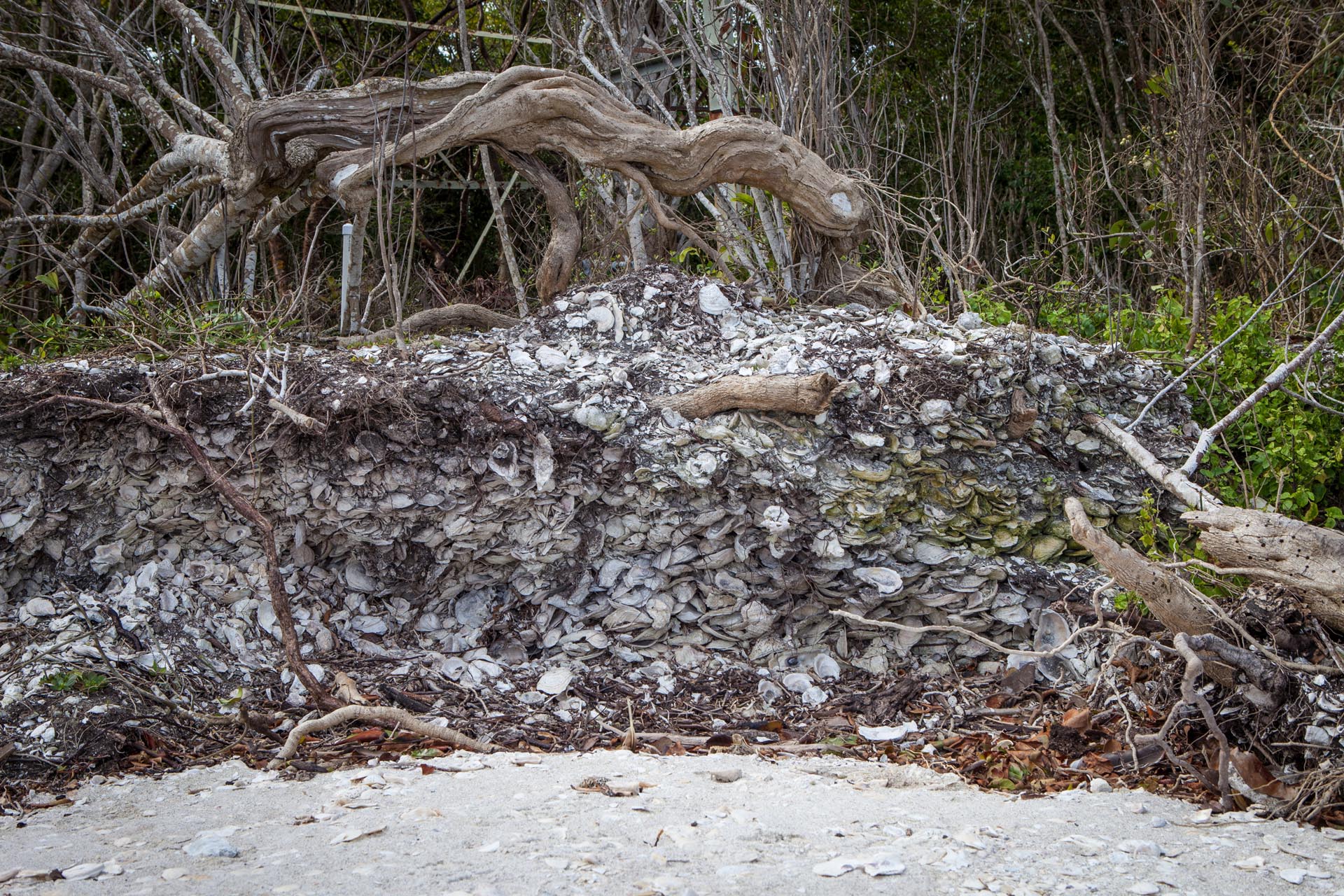
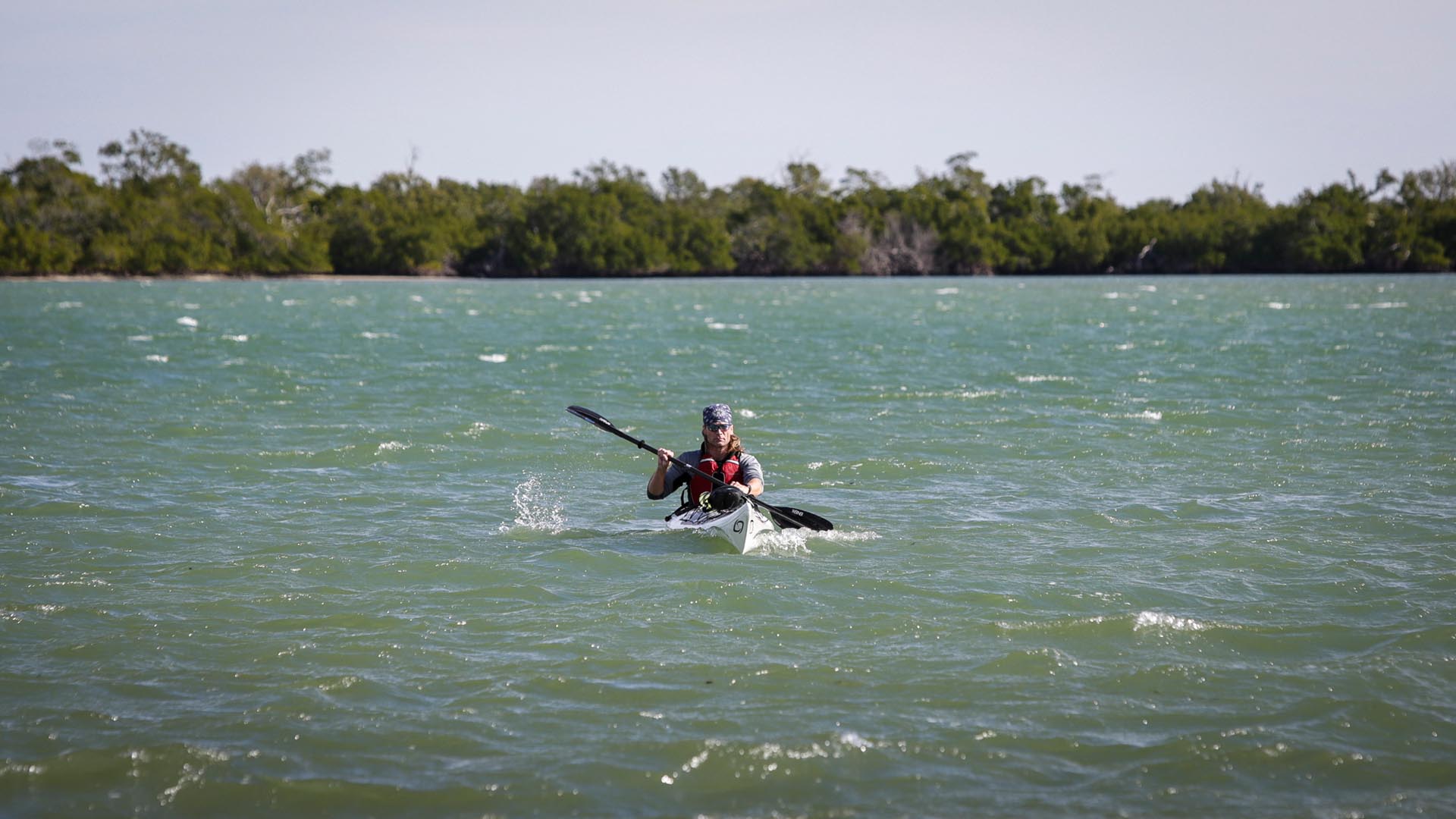
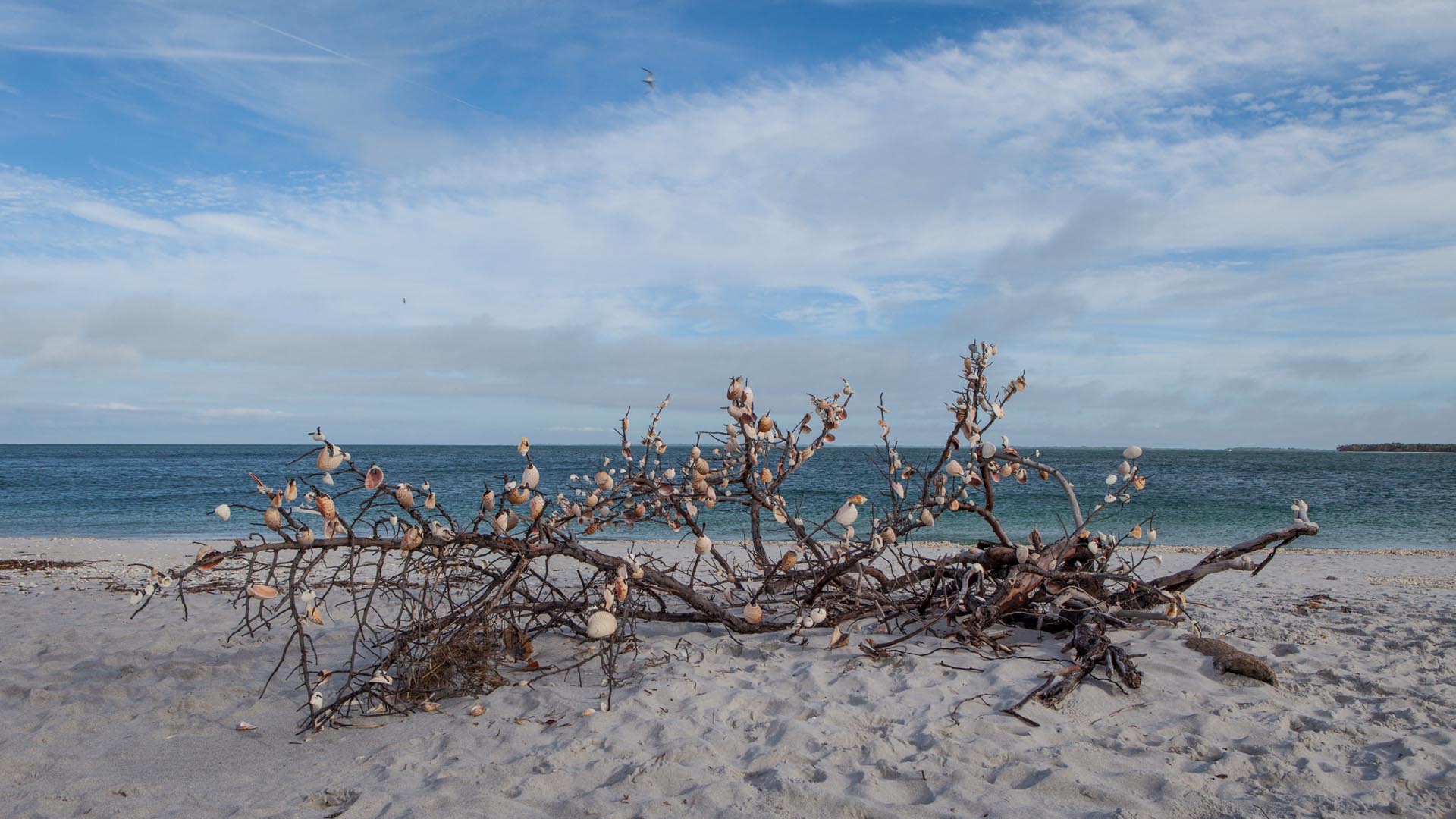
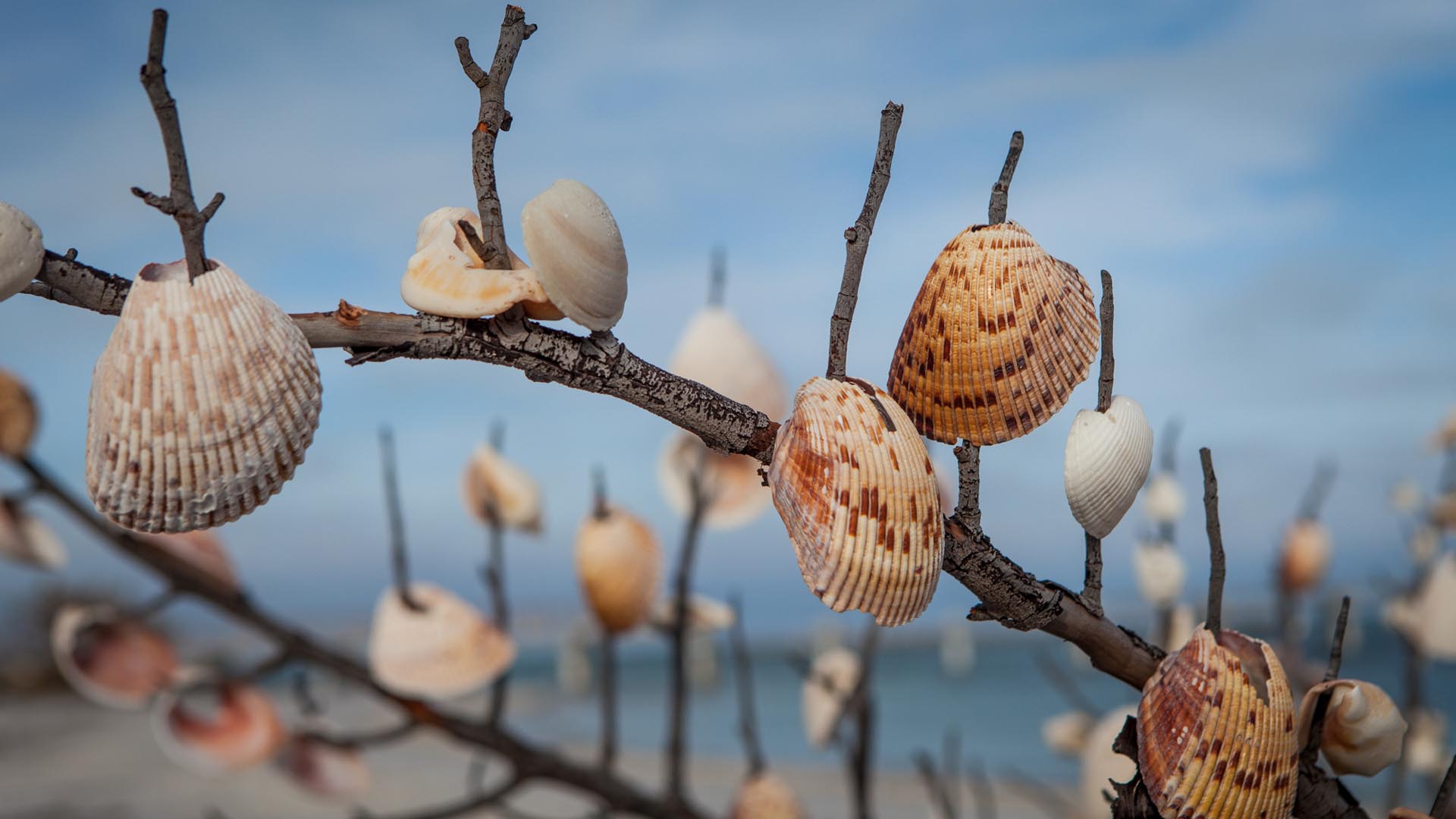
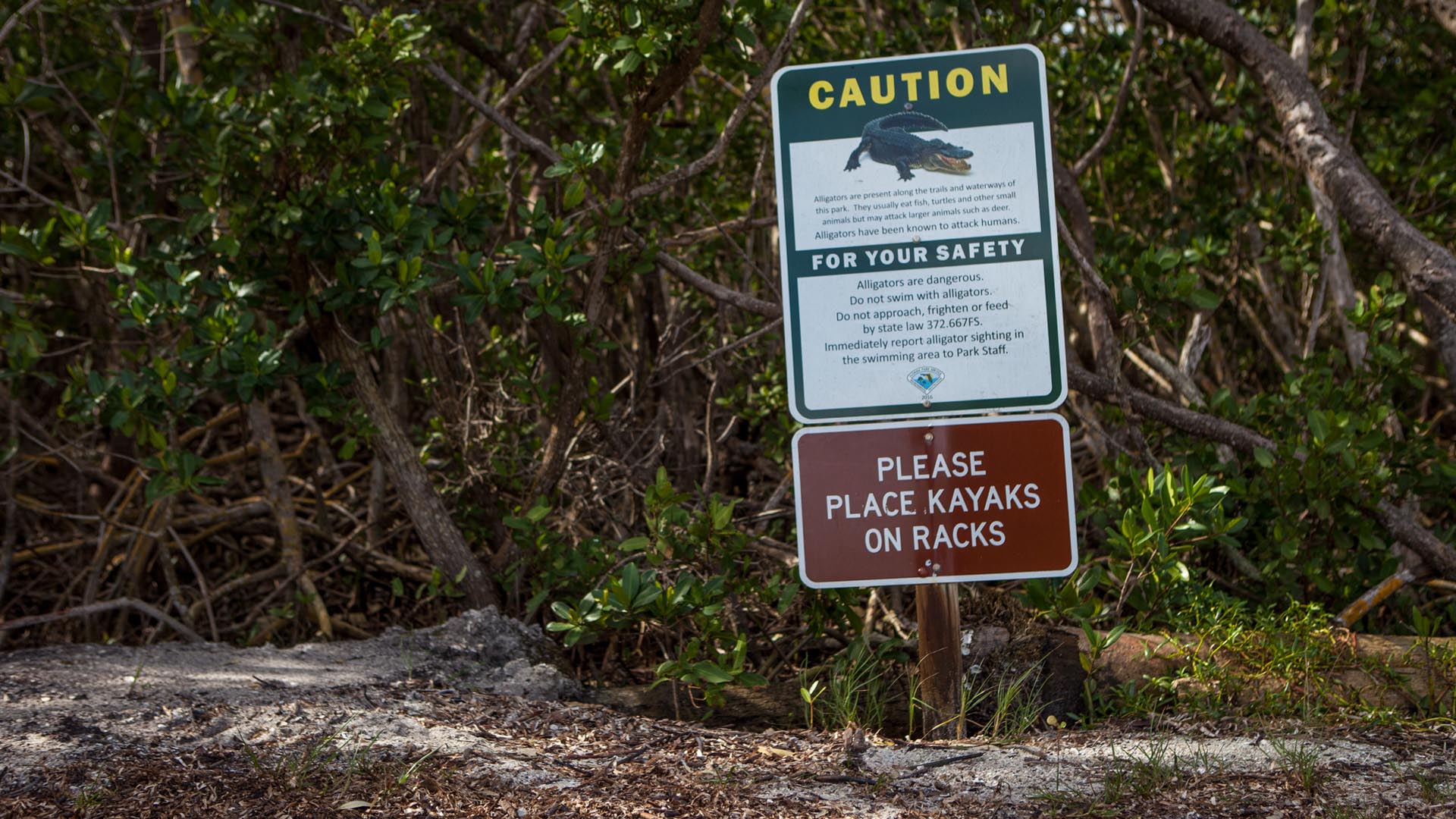
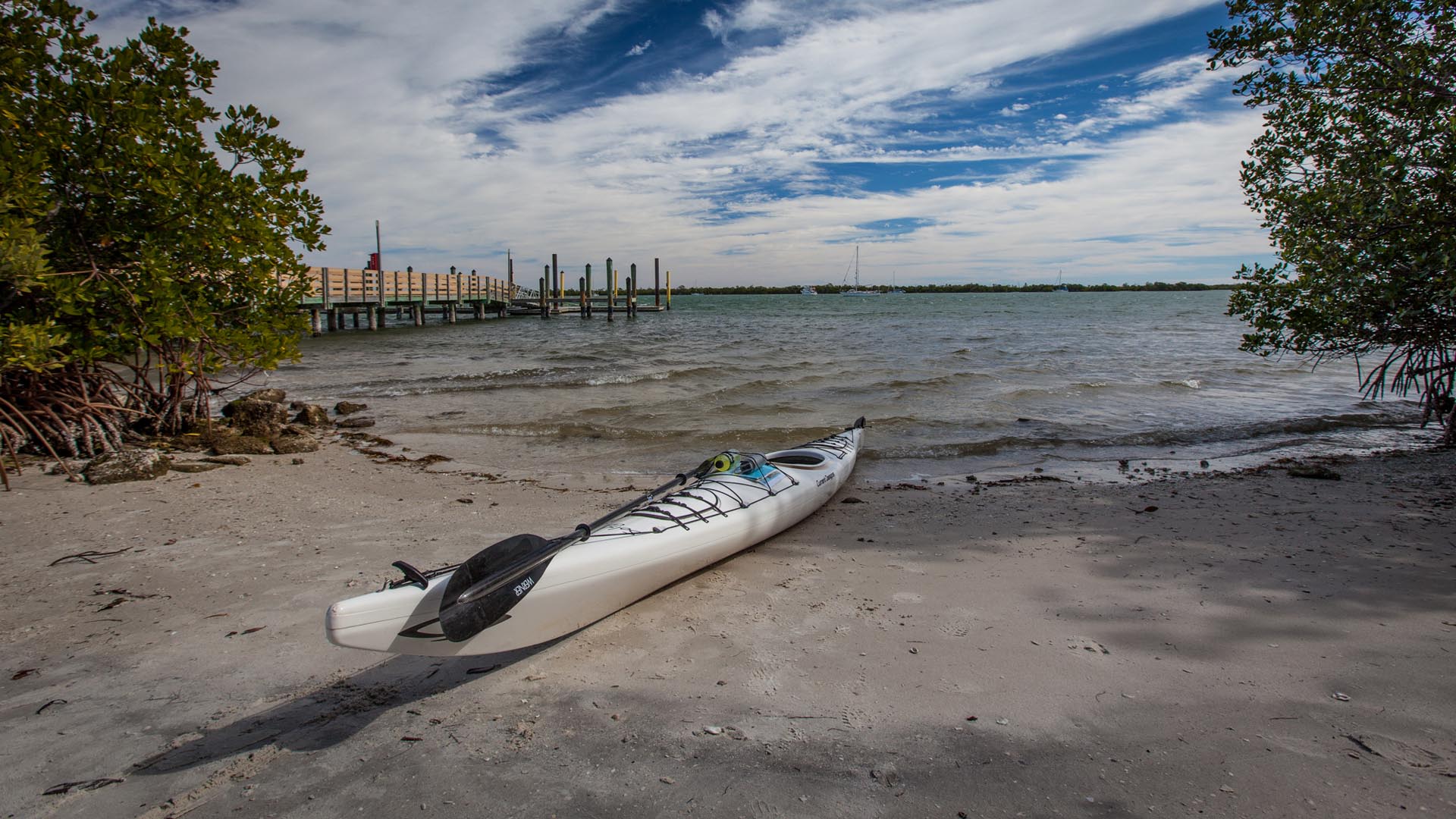
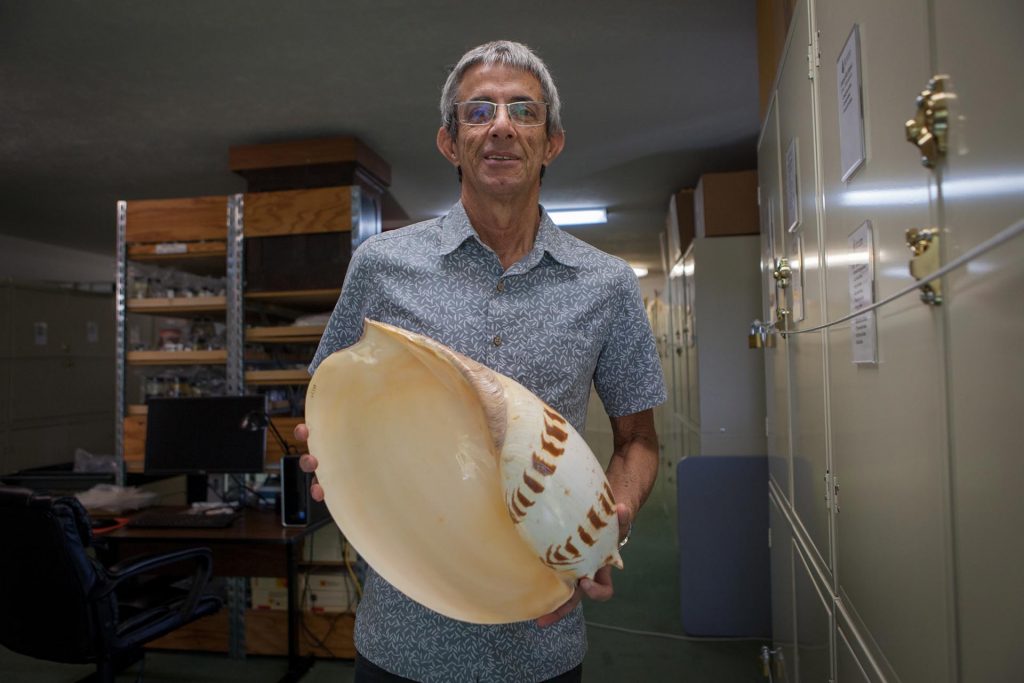
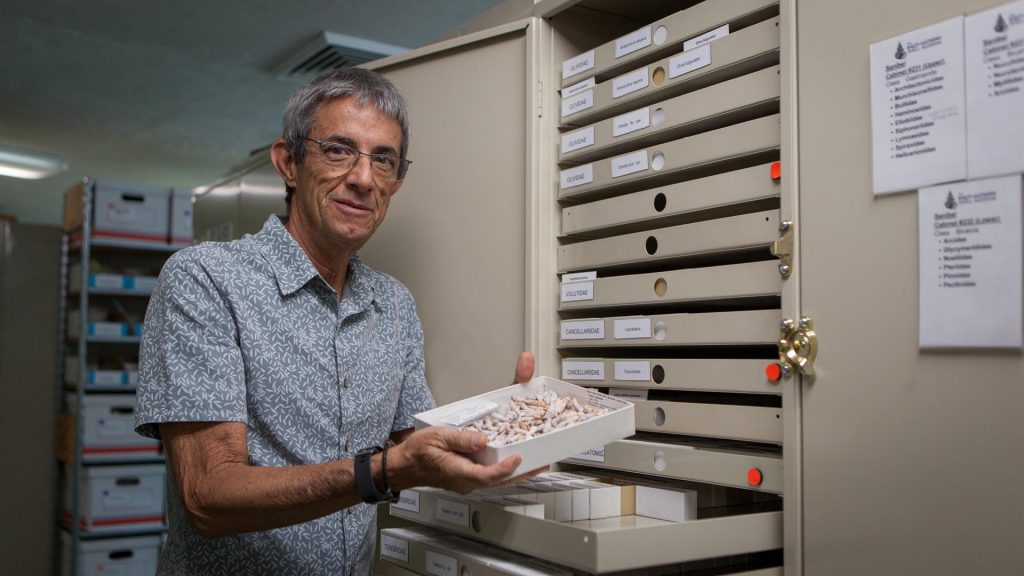
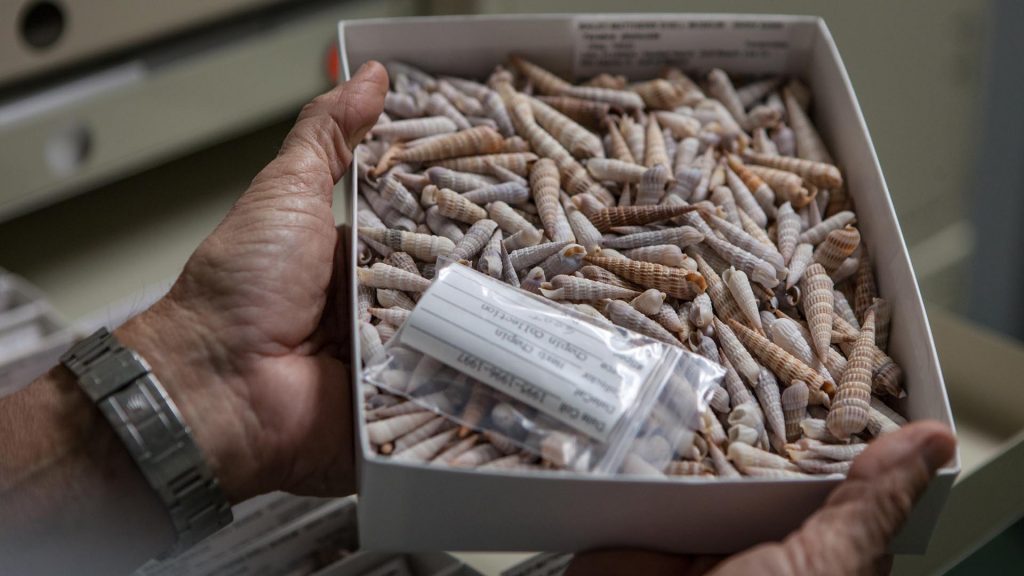
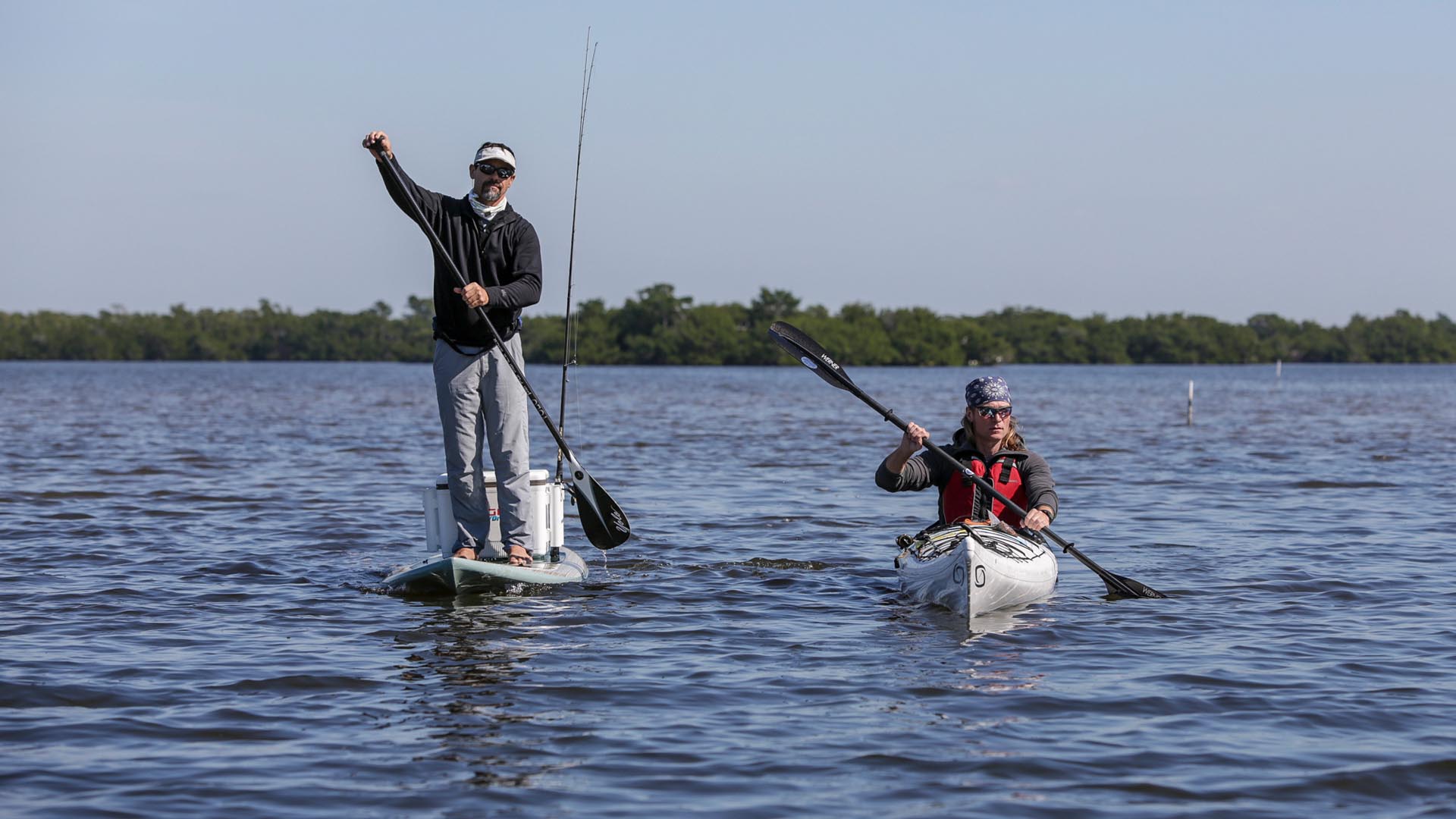
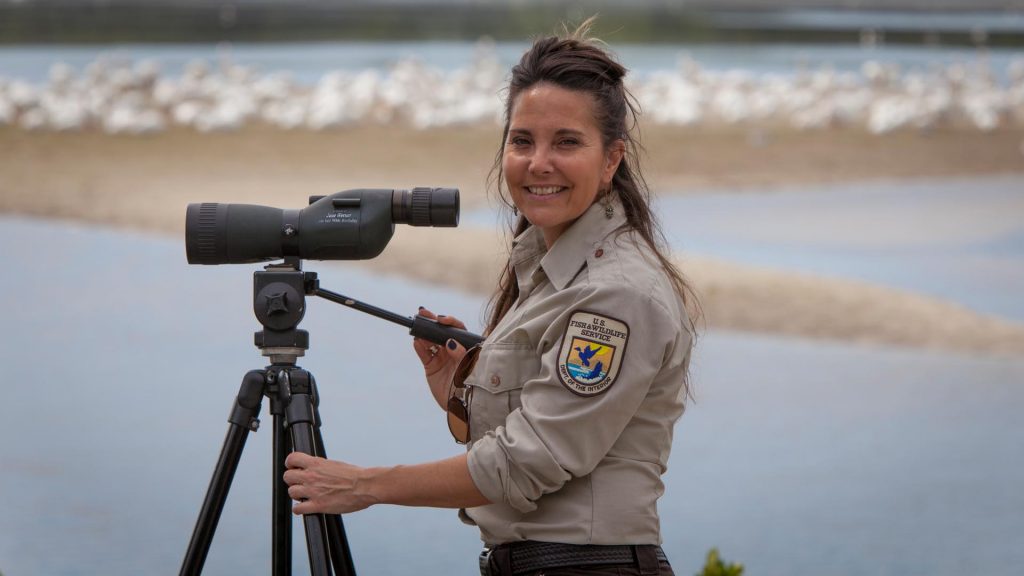
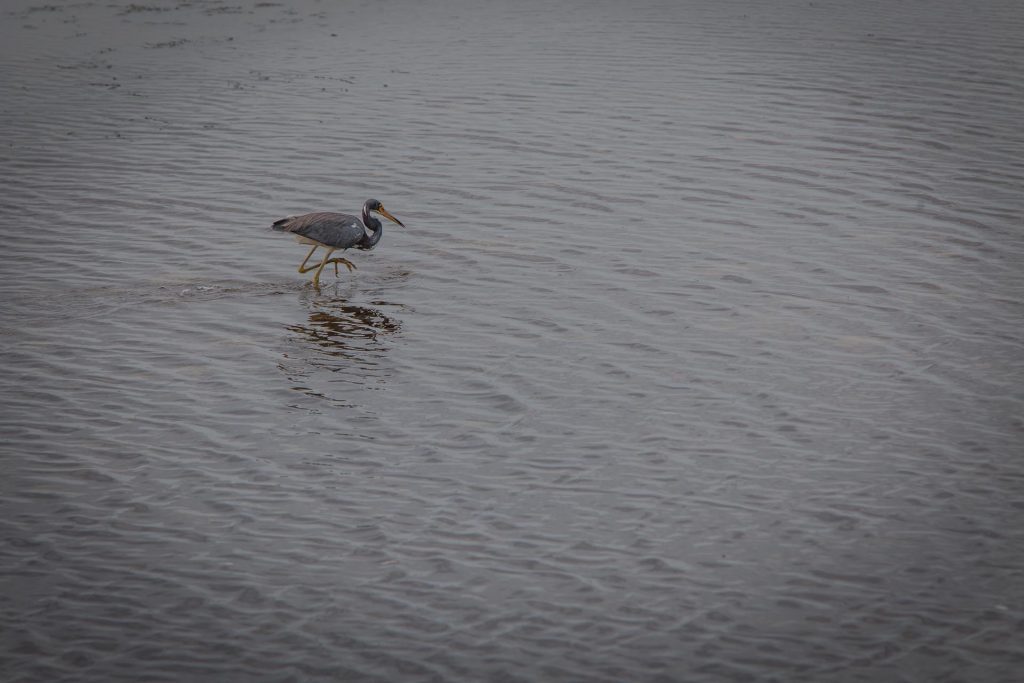
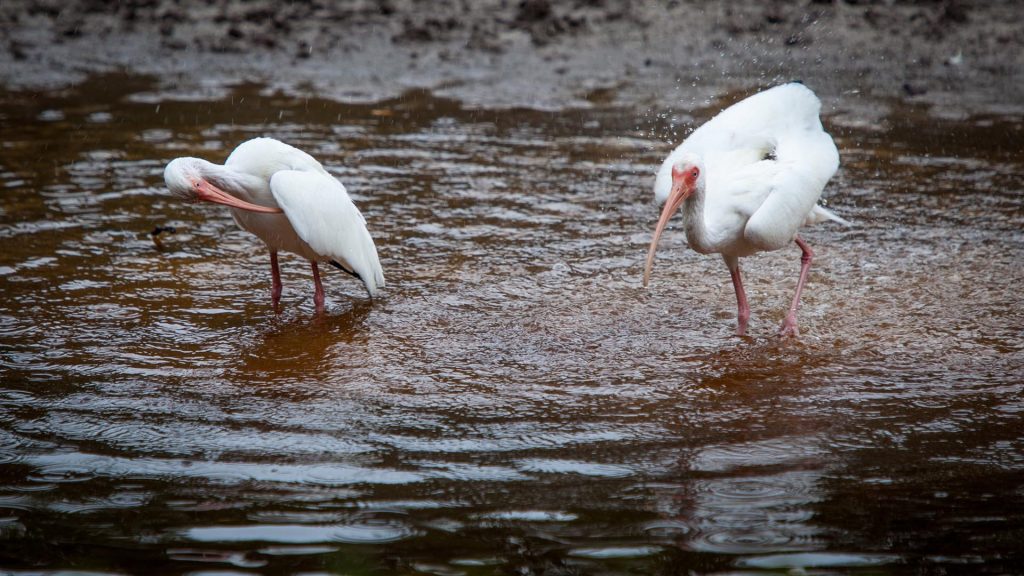
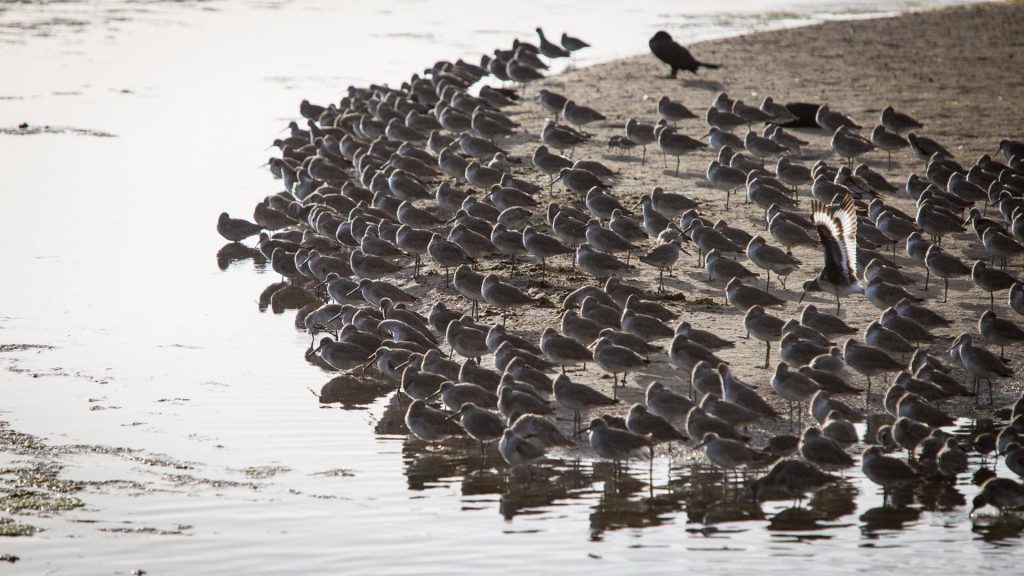
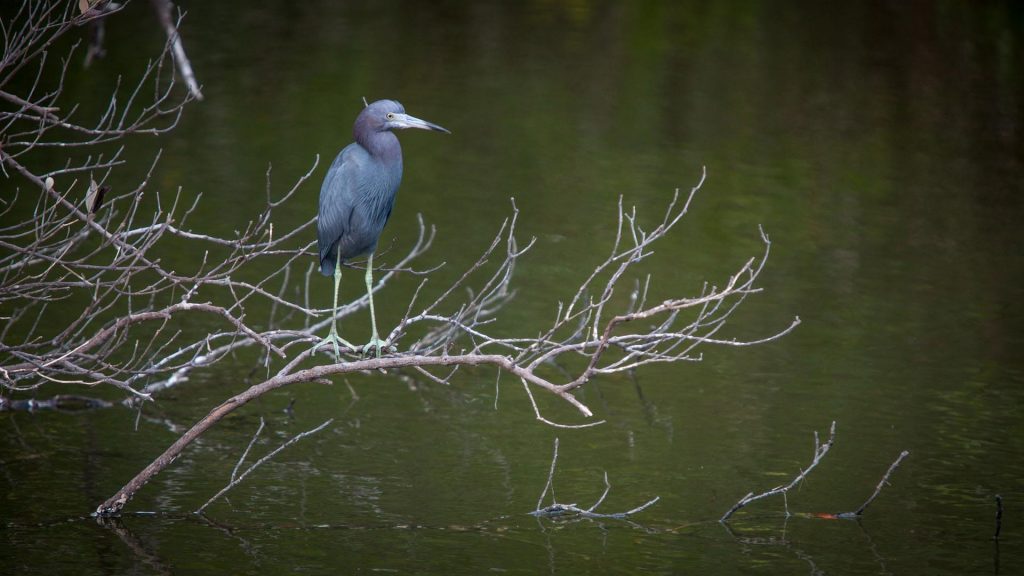
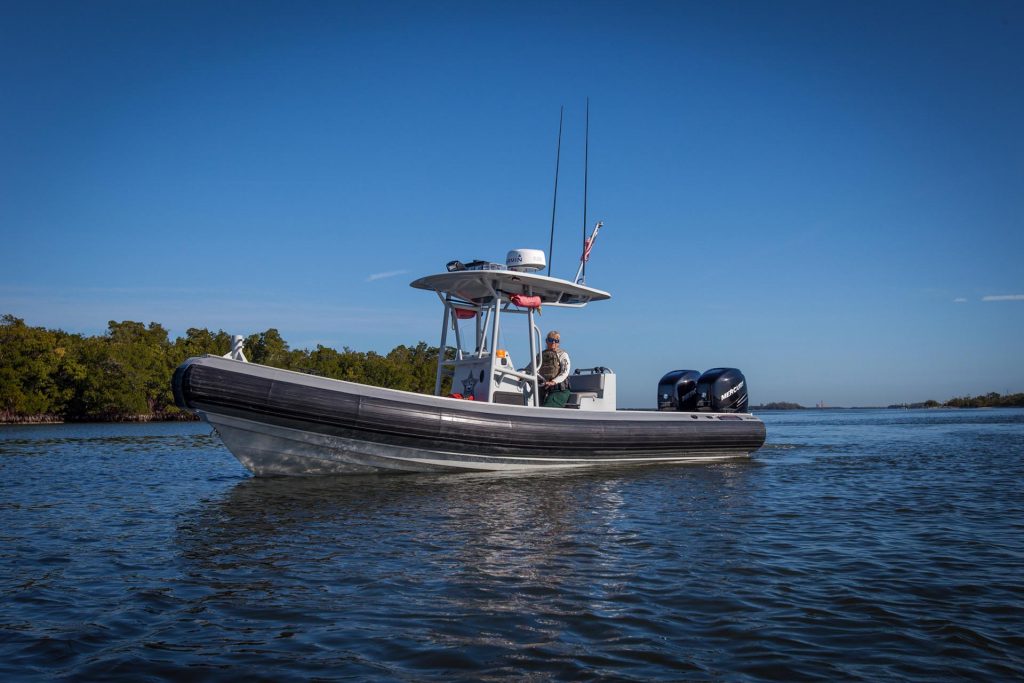
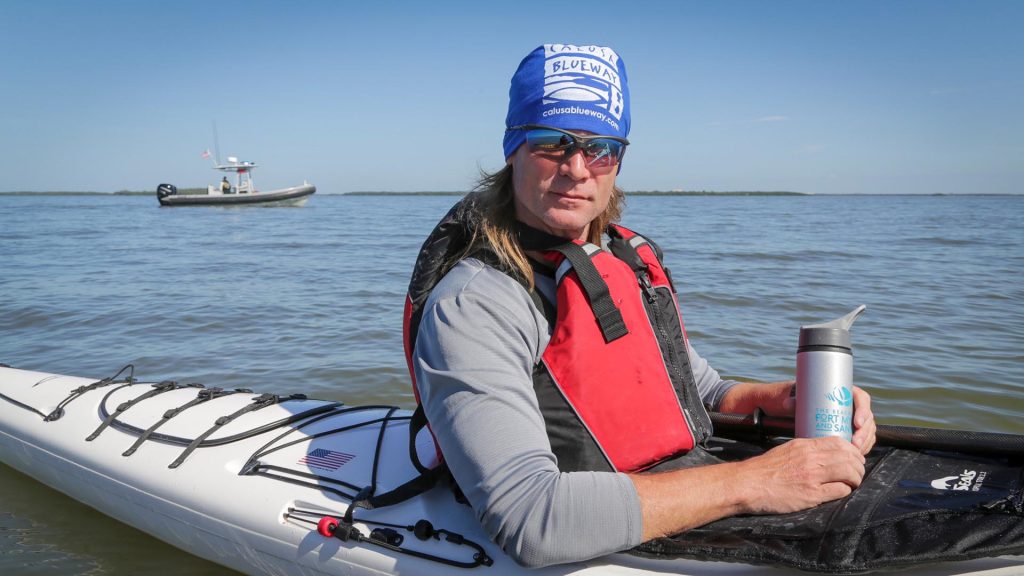
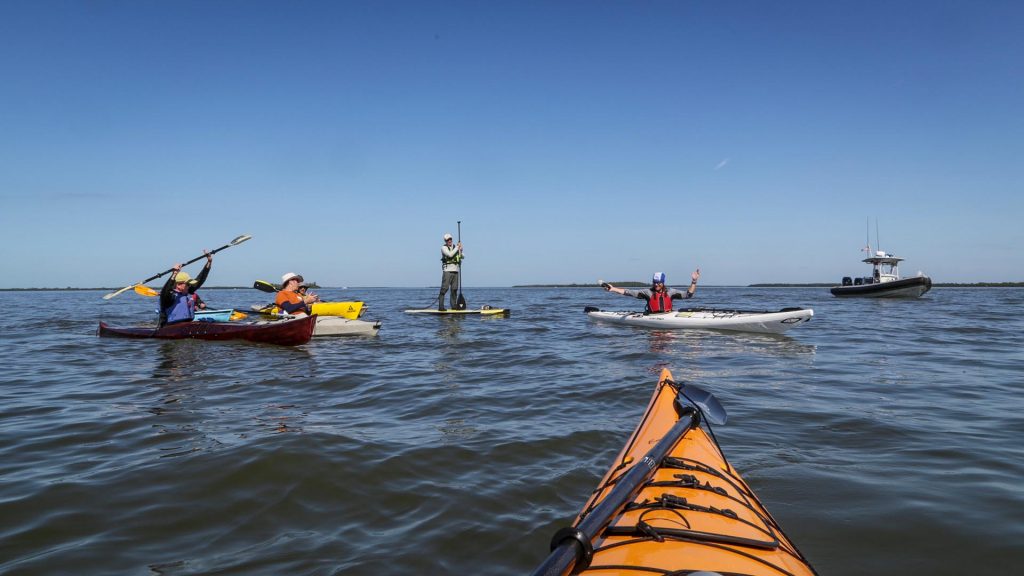
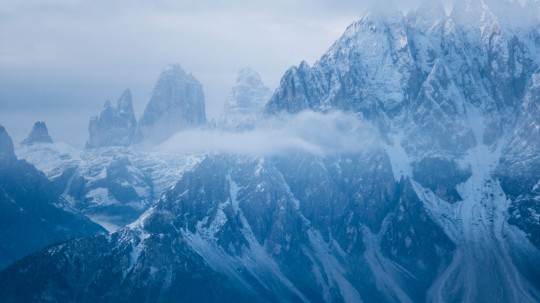
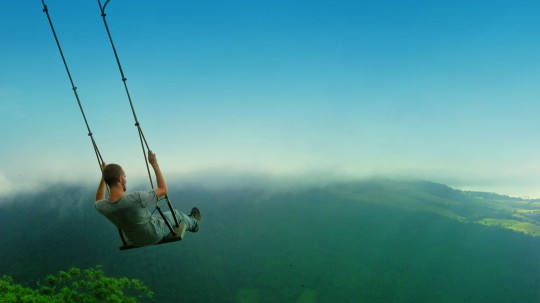

Readers Mail
Tell us what you think
Pradeep on 11. März 2020
Vielen Dank, dass wir dies geschrieben haben.
Mathis Claudel on 31. Mai 2020
What an amazing story !
Adam on 31. Juli 2020
Amazing Story!
Nath on 3. August 2020
I love your blog and content, I find it super useful and looking forward to reading more.
Whiteblack on 5. Dezember 2020
a wonderful story. I traveled with you
Hannah Jones on 3. Januar 2021
Wow, I never knew that Florida is this mystical. Thank you for sharing this story, very detailed, it’s like traveling with you. Looking forward to your future travels!
Baguio on 15. Januar 2021
Beautiful Story + Beautiful Images + Coffee What else will I look for?, I’m hooked up to your blog, I miss traveling already. Reading your story feels like I’m also experiencing your travel experience. kinda off-topic, I don’t know why I imagine some clips from the Anaconda movie on some of your Images :D
Anyway Thanks for sharing your travel experience, looking forward to reading more content from you :)
Robin Anthony on 16. März 2021
Great Experience
Gustavo Woltmann on 30. März 2021
I didn’t know Florida had such an amazing place.
Deepa Kartha on 2. April 2021
Brilliant post! Got caught up in reading right from the beginning. The way you have narrated your tales along with such beautiful pictures and videos made it a fascinating read. Quite an unforgettable adventure you had.
Christine on 5. April 2021
Hallo,
Reine Sehnsucht ! Wir verbringen seit Jahren jedes Jahr im November /Dezember drei bis vier Wochen in Cape Coral, allerdings etwas luxuriöser in einem Ferienhaus… aber wir lieben die Natur um Cape Carol, Matlacha und Sanibel Island herum. Leider war das ja im letzten Jahr nicht möglich, und ob es in diesem Jahr klappt wissen wir auch noch nicht. So hat der Bericht ein wenig ‚Heimweh‘ und viel Sehnsucht ausgelöst, war aber trotzdem wunderschön anzusehen !
Grüße aus Deutschland
Christine
Bryson Fico on 19. April 2021
Wow, I never thought of the Florida as a river/ocean Kayak destination until reading your blog/story. I kayaked the San Juan Islands and completed the Bowron lakes canoe route. I am for sure placing the Blue Way on my list the Mangrove area is so unique.
Yogesh on 4. Mai 2021
One of the best travel websites recently read
La Vida Gypsea on 5. Mai 2021
This is a beautiful illustration of your travel adventures! We have been living in Bocas Del Toro Panama for over 5 years and we love it. We are now moving again to live on a sailboat and are documenting our adventures in a Blog and Vlog! Check out our website!
lavidagypsea.com
Pankaj Sharma on 22. Mai 2021
I am a travelling lover.. I always search for new places for traveling. You have shared a list of best place. Thanks for sharing.
Hannah Jones on 30. Mai 2021
Wow! Great post and stunning photos and videos. The mangrove area is so beautiful, Reading your blog feels like I’m also experiencing it. Thank you for sharing this awesome post!
Praskoviya Borisova on 22. Juli 2021
This is really an amazing travel experience & I’m glad you shared it with us!
I’m sure you both gonna love Seychelles, its filled with Adventures & lots of romantic stuff to offer!
Riya on 23. Juli 2021
Thank god the pandemic has taken a slowdown.. I am going to visit Calusa soon and take the much required break!
Dean Smith on 27. September 2021
What an amazing story! You guys motivate us to make exploring jurneys around the world. Thanks for sharing these moments with us!
Stacy on 7. Oktober 2021
Wow, I never would have guessed.
When I saw the image I thought it would be in a very far place.
Amazing!
An unforgettable experience.
I love your blog and all your content.